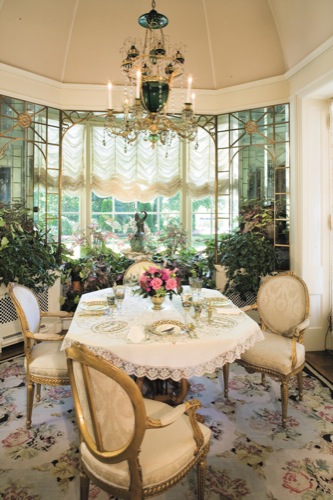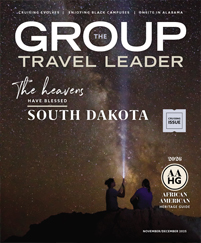
Courtesy Hillwood Estate Museum and Gardens
Hillwood Estate, Museum and Gardens
When Marjorie Merriweather Post, heiress to the Post cereal empire, purchased a house in Washington’s Rock Creek area in the mid-1950s, she wanted it to be a showcase for her extensive art collection.
“She spent two years renovating it before she moved in,” said Lynn Rossotti, director of marketing and communications for the Hillwood Estate, Museum and Gardens. “She wanted it not only livable but for it to display her art collection.”
Post lived in the house until her death in 1973. She left the house, her art collection and large gardens to the Smithsonian Institution. The Smithsonian later turned it over to a nonprofit foundation, which operates it today as a combination house museum, art museum and gardens.
Rossotti said the house is interpreted to show how Post lived there and her art. “We have these glimmering, amazing objects, but also the accoutrements of her life.”
Post’s primary areas of interest were 18th-century French decorative art and Russian art. “We have the most significant collection of Russian imperial art outside Russia,” said Rossotti.
The collection of more than 16,000 items includes Fabergé eggs, Russian porcelain, Russian Orthodox icons, Beauvais tapestries and Sèvres porcelain.
The 13 acres of formal gardens, where Post’s ashes are buried, include rose gardens, a Japanese garden, a Russian dacha with Russian art and an Adirondack building for special exhibitions.
Textile Museum
“Our collection comprises 19,000 textiles from around the world, anything from carpets to wall hangings to a costume to a hat,” said Katy Clune, communications and marketing manager for the museum. “We even have some shoes.
“The areas we specialize in are Asia, South America and the indigenous cultures of the United States. We don’t have quilts, for example, but we have Native American weaving.”
George Hewitt Myers, who wanted people to appreciate textiles as works of art, founded the museum in 1925. Because of his interest in the intrinsic beauty of Oriental carpets, the museum has one of the most important research collections of such carpets in the world for both its range and its depth.
Groups can schedule tours of the museum, including of its interactive Textile Learning Center, where visitors learn how textiles are made and how they are influenced by culture and the economy.
“Dragons, Nagas and Creatures of the Deep,” which runs through Jan. 6 and is drawn entirely from the museum’s collection, features textile depictions of dragons from around the world. “It explores how people of different cultures imagine these creatures in different ways,” said Clune.
The museum is housed in two historic buildings on Embassy Row in Dupont Circle. Large gardens behind the buildings are open to the public.
In 2014, the museum is scheduled to move to a new custom-built facility on the campus of George Washington University that will also be home to the George Washington Museum.
www.textilemuseum.org









